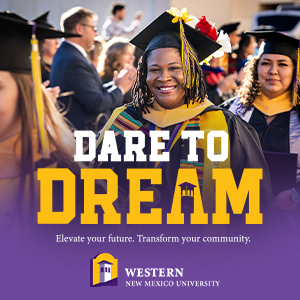New Mexico State University's Disability Access Services has teamed up with Aira, an on-demand remote visual interpretation service for the blind and low-vision community, and T-Mobile Accessibility, to offer more accessibility through a free app now available and active at all NMSU campuses across the state.
The Aira app, which can be downloaded through the Apple App Store or Google Play, outlines the geo-fenced zones where users can access Aira at no cost. It will allow users on all campuses to access live visual interpreting services to help students and visitors more safely navigate the grounds and buildings of NMSU's main Las Cruces campus, as well as its Doña Ana Community College campuses, NMSU Alamogordo and NMSU Grants.
"Given the experiences of some blind and low-vision students who attend or live on campus, there's an added effort needed to navigate campus that other students don't face, such as getting maps, signs, or orientations that let them know how to get around everywhere," said Aaron Salas, director of NMSU Disability Access Services. "Some have to rely primarily on orientation, training – they have to learn every path to every class, and that doesn't take into account bad weather, breakdown in transportation routes, or the craziness of everyday life. So having this type of service is something we're very excited about."
"When we think about the service, we wanted to try and make it very low friction and easy, almost like turning on a light switch. You can put in an address or coordinates, and we essentially put this invisible fence on the perimeter," said Troy Otillio, CEO of Aira. "It's nothing physically to install – just doing some data entry – and like a light switch, it will turn on access for any campus."
The Aira app also connects users to a trained visual interpreter who can assist those who provide visual access through their smartphone camera with tasks like reading a class syllabus or a new assignment.
Salas and Otillio added that some students in the blind and low-vision community enroll in online classes to avoid navigating the campus. Others are more likely to stop attending after their freshmen year due to the challenges they face. The goal of this service is to make in-person degree paths more accessible and improve the overall experience at NMSU for students facing vision challenges.
"New Mexico School for the Blind and Visually Impaired is serving students near us in Alamogordo and Albuquerque, but we're not enrolling many of those students," said Salas. "So, we're hoping that this will encourage students to come and enroll and live on our campus."
Since many students transfer between NMSU's community college and main campuses, Salas said the DAS office wants to make the experience seamless for them and ensure they know what services are available for those who need accessibility accommodations.
"As we started learning more about services, we've upgraded equipment," Salas said. "Accessibility is part of our LEADS 2025 strategic plan, and the university really stands behind that in funding these needed services."
For more information about Aira, visit https://aira.io. For more information about NMSU Disability Access Services, visit https://studentlife.nmsu.edu/disability-access-services1/index.html. For more information about T-Mobile Accessibility, visit https://tmobileaccess.com.
The full article can be seen at https://newsroom.nmsu.edu/news/nmsu-collaboration-provides-greater-accessibility-for-blind--low-vision-students/s/c6dddeda-47f1-4336-9d6f-989f710f08ba










